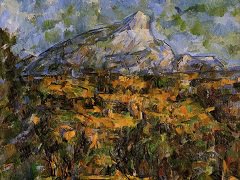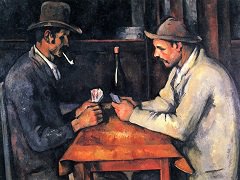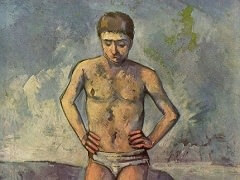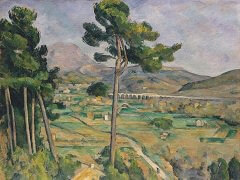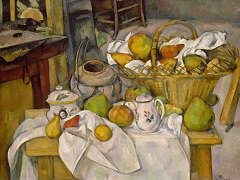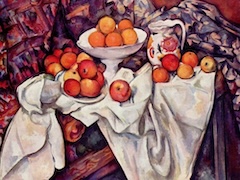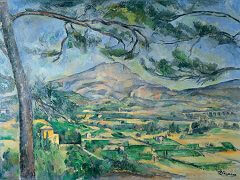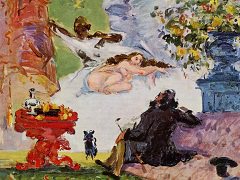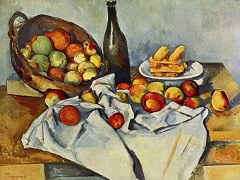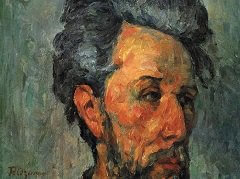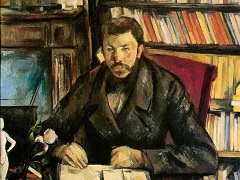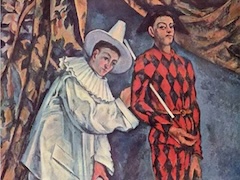Still Life with Apples and Peaches, 1805 - by Paul Cezanne
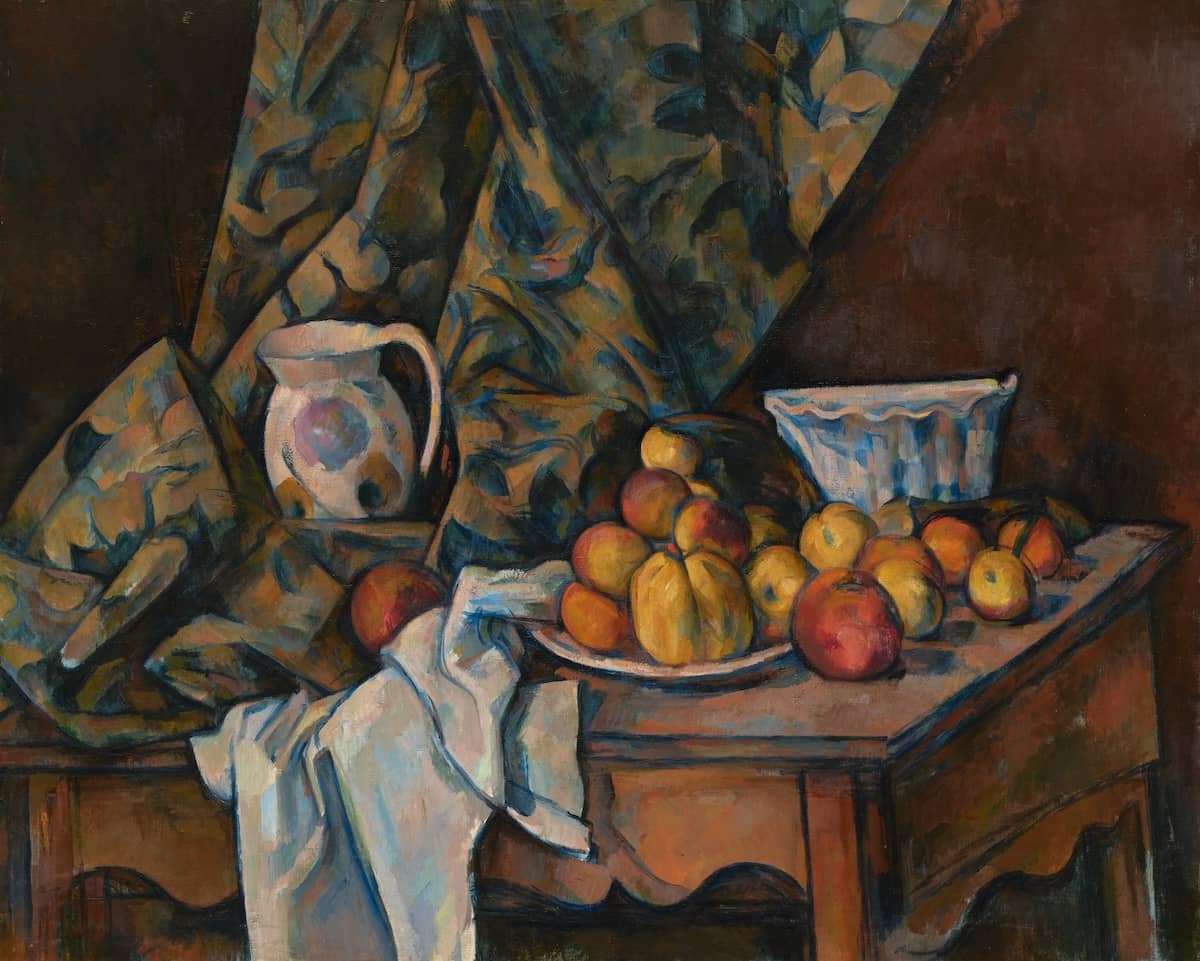
"The eye must grasp, bring things together," Cezanne said, "The brain will give it shape." In a still life, where the artist also creates the world he paints, each object, each placement, each viewpoint represents a decision. Cezanne painted and repainted the objects pictured here many times. The table, patterned cloth, and flowered pitcher were all props he kept in his studio. Every different arrangement was a new exploration of forms and their relationships.
Here the table tilts unexpectedly, defying traditional rules of perspective. Similarly, we see the pitcher in profile but are also allowed a look down into it. Paradoxically, it is Cezanne's fidelity to what he saw that accounts for this "denial" of logic and three - dimensional space. It is not so much that he is deliberately flattening space. Rather he is concentrating on the objects themselves instead of the perspectival scheme - the "box of air" - in which they exist. Cezanne worked slowly and deliberately. Over the course of days, he would move his easel, painting different objects - or even the same one - from different points of view. Each time, he painted what he saw. It was his absorption in the process of painting that pushed his work toward abstraction.


